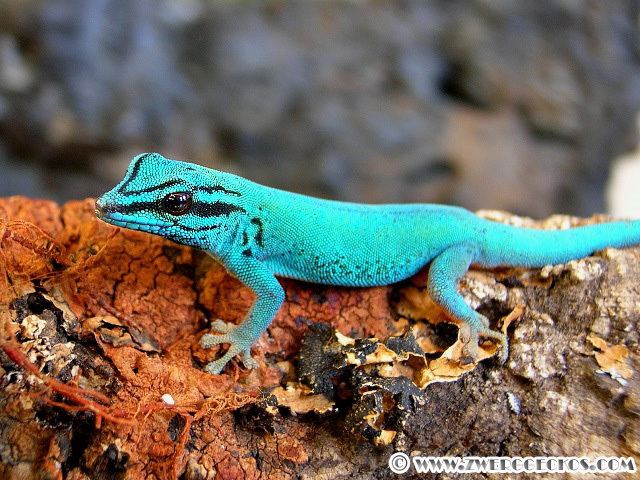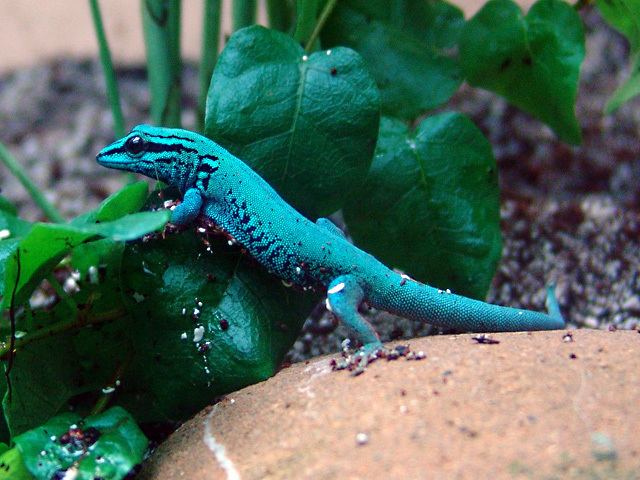Subphylum Vertebrata Suborder Sauria Rank Species | Phylum Chordata Infraorder Gekkota | |
 | ||
Similar Lygodactylus, Reptile, Geckos, Phelsuma, Cape dwarf gecko | ||
Lygodactylus williamsi is a critically endangered species of lizard, endemic to a small area of Tanzania. Common names include turquoise dwarf gecko, William's dwarf gecko, or, in the pet trade, electric blue gecko.
Contents

Illegal wild-caught specimens are widely sold in the pet trade, often misdescribed as captive-bred. Although L. williamsi breeds in captivity, the young require a lot of care, making large-scale breeding difficult. A captive breeding project and studbook was initiated by EAZA zoos in 2013. The species was placed under CITES protection in 2015.

Population

This gecko's survival is mostly threatened by (entirely illegal) collection for the international pet trade. It is critically endangered and the population is thought to be declining rapidly.

Although trade in wild-caught turquoise day geckos is illegal, wild-caught geckos are commonly sold in pet shops. It is estimated that between December 2004 and July 2009, at least 32,310 to 42,610 geckos were taken by one collecting group, ~15% of the wild population at the time.
Geographic range
L. williamsi is only found in 8 km2 (3.1 sq mi) of the Kimboza Forest, Ruvu Forest Reserve, Mbagalala and Muhalama at an altitude of 170–480 m (560–1,570 ft). These are located at the foothills of the Uluguru Mountains in eastern Tanzania.
The subpopulation in Kimboza Forest Reserve was estimated at 150,000 adults in 2009. The size of the remaining subpopulations is unknown, but their size is not thought contribute significantly to the total population. The two known sites outside protected areas are tiny: one consists of 14 Pandanus trees (the rest has been cleared for banana plantations) and the other is equally close to disappearing.
Habitat
In the wild, turquoise day geckos live exclusively on the (endangered) screwpine, Pandanus rabaiensis, mostly in the leaf crown. They only live on large trees, those with leaves more than a meter long. A single leaf crown will typically contain a single individual, or an adult male, and adult female, and juveniles. They eat small insects and drink water from leaves. They are also fond of nectar.
Habitat loss
Collectors commonly cut down screwpine trees to reach the geckos living in the leaf crest, destroying the gecko's habitat. Many geckos are thought to die while being shipped to market. The pet trade is likely a worse threat than habitat loss.
L. williamsi's tropical forest habitat is also shrinking and fragmenting. Neither of the Catchment Forest Reserves where it occurs is well-protected. The forest is seriously threatened by pet collectors, clearing for farmland, illegal logging, increasingly frequent fires, mining of rubies, tourmaline, rhodolite, gold and dolomite and limestone from outcrops on which the screwpines grow. Invasive trees such as Cedrela are also a threat. There is little forest left unaffected.
Appearance
Males are bright blue with heavy black throat stripes, visible preanal pores, and hemipenile bulges. The females range from brown or bronze to bright green, and have little to no black on their throat. Females can easily be confused with juvenile or socially suppressed males that are also green, sometimes with a bluish cast. The underside of both sexes is orange. Colours of individuals vary according to mood and temperature. Males may range from black or gray to brilliant electric blue. Females may range from dark brown to brilliant green with turquoise highlights. Adult snout-vent length is 5 to 8 cm (2.0 to 3.1 in).
An Lygodactylus spp. identification guide has been published online by CITES., largely for the use of customs officers (illegal shipments of these geckos are often intentionally mislabelled).
Behavior
Like all geckos of the genera Lygodactylus and Phelsuma, this species is diurnal. They are bold, active, and social. Males are territorial, and do not generally tolerate the presence of other males. Social gestures include lateral flattening, puffing out of the throat patch, head shaking and head bobbing, and tail-wagging.
Reproduction
Males court females with lateral flattening, puffing out of the throat pouch, and head bobbing. Two to three weeks after copulation, the female lays a clutch of 1 or 2 pea-sized white, hard-shelled eggs which are glued to a surface in a secure, hidden location. Eggs hatch in 60 to 90 days.
Etymology
The specific name, williamsi, given to the gecko by British zoologist Arthur Loveridge, honours American herpetologist Ernest Edward Williams.
